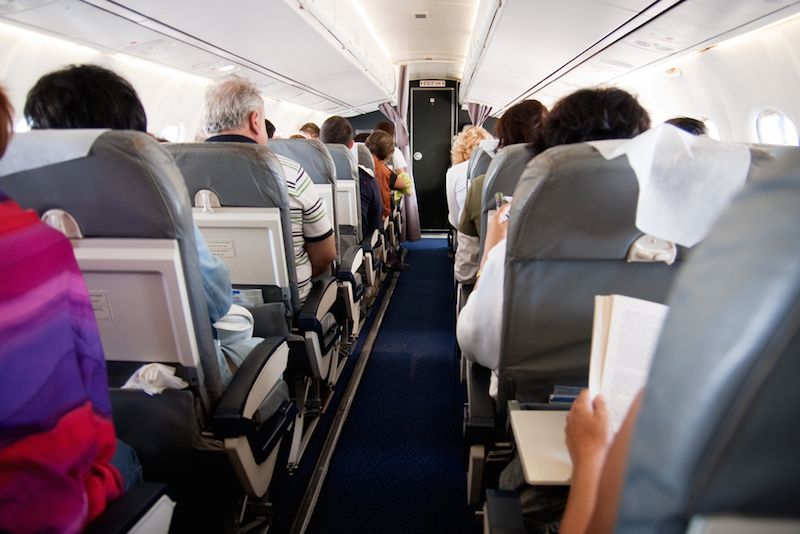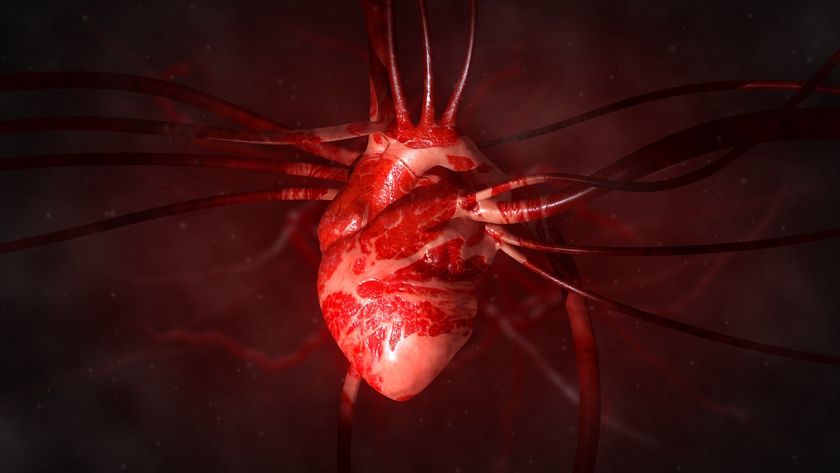Man Having Heart Attack on Plane Saved by Passengers

A man who suffered a heart attack on an airplane was saved by a three passengers — a doctor, a policeman and a pharmacist — with the aid of resuscitation equipment and drugs.
The plane was flying through some of the most remote airspace in the world when the man had a myocardial infarction, followed by cardiac arrest. But thanks to passengers and crew who were trained in basic emergency care, the man survived until the plane landed; he later made a full recovery, according to a report of the incident published Aug. 22 in the British Medical Journal.
The emergency reveals the importance of training laypeople in basic resuscitation, and of keeping an automatic external defibrillator (AED) on board flights, said Dr. Dave Monks, co-author of the report and one of the passengers who came to the man's aid. Monks was an anesthesiologist at the Royal Free Hospital in London at the time of the flight. [5 Real Hazards of Air Travel ]
"This guy was extremely fortunate to have this team there," the doctor said.
Monks was on board the plane from Canada to Hong Kong when the man began complaining of chest pain. Monks went to speak with the man, who said his pain was radiating to his ears and gums, before he lost consciousness. The passenger had no pulse, Monks said.
With the man still sitting in his seat, Monks began doing chest compressions and called for help. Two other passengers, a policeman and a pharmacist, answered the call.
"These guys just happened to be on the plane and even with the [basic medical skills] they had, they were able to perform a quite dramatic and sophisticated critical care resuscitation," Monks told Live Science.
Sign up for the Live Science daily newsletter now
Get the world’s most fascinating discoveries delivered straight to your inbox.
Together, the three passengers moved the man to a more open area of the plane, near the emergency exit, and the policeman took over doing CPR, freeing up Monks to monitor the man's airway. A flight attendant dashed over with an (AED), a portable device that can detect irregular heartbeats and electrically shock the heart so it can re-establish a normal rhythm.
Defibrillators are available on some planes, but not all, Monks said. The U.S. Federal Aviation Administration requires all flights to carry them, but it's not an international mandate. "In this case, [the device proved] lifesaving for this man," Monks said.
The crewmembers used the AED to shock the man's heart back into a rhythm and restore blood flow to his brain and vital organs. But later, the man had more trouble. It's likely that his heart went into an irregular rhythm because of a condition called cardiogenic shock, and then he went back into cardiac arrest, Monks said.
The doctor and the others resumed CPR until the man showed signs of life. Under Monks' direction, the pharmacist, who had worked in an intensive care unit, administered epinephrine (also known as adrenaline) from the plane's medical kit intravenously, adjusting the dosage as needed.
Meanwhile, the plane was diverted to the nearest major city, in China. When the flight landed, the man was taken to a nearby hospital and given anti-clotting drugs. He later made a full recovery and suffered no brain damage, Monks said.
In fact, medical emergencies on airplanes are fairly common, occurring on about 1 in every 600 flights, according to a 2013 study in the New England Journal of Medicine. But in only 7 percent of cases does the aircraft have to divert its route, the study found.
The most common medical complaints on flights are feelings of lightheadedness or passing out (known as syncope), followed by respiratory problems, nausea and vomiting, according to the study. About 1,000 passengers per year experience sudden cardiac death on commercial flights, according to a 2011 study published in the Singapore Medical Journal. More people die of heart problems on flights than in airplane crashes, Monks and his colleagues said.
Medical emergencies can happen anywhere, but they may be more likely on airplanes because of the "lethal cocktail" of travel-related stress, disturbed sleep patterns and lower levels of oxygen. Pilots, too, have been known to suffer heart attacks while in flight.
Advances in telemedicine could allow airline crews to relay audio and visual information to ground-based doctors in the event of future emergencies like the one Monks witnessed, he said.
Follow Tanya Lewis on Twitter and Google+. Follow us @livescience, Facebook & Google+. Original article on Live Science.













